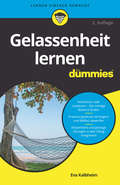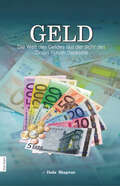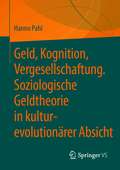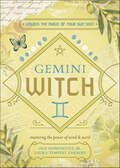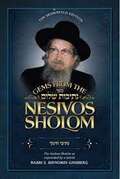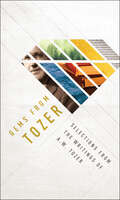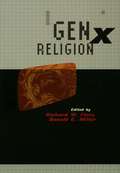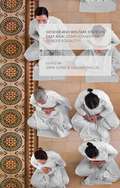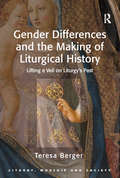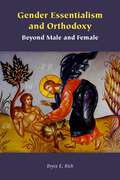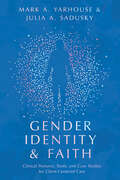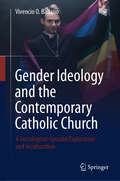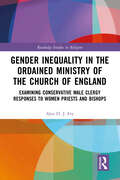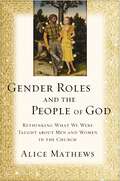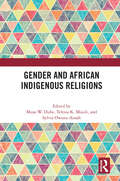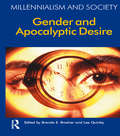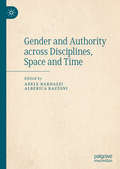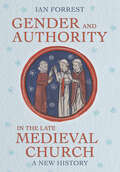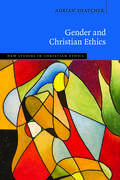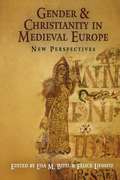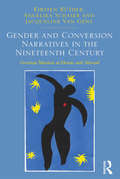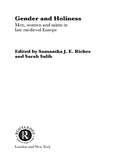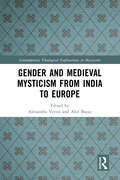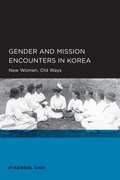- Table View
- List View
Gelassenheit lernen für Dummies (Für Dummies)
by Eva KalbheimGelassenheit ist der Schlüssel zu einem ausgeglichenen Leben. Wer in sich ruht und um sich herum die Dinge auch mal geschehen lassen kann, lebt gesünder. Doch so einfach das klingt, so schwierig ist es im Alltag umzusetzen. Denn viele verspüren starken Termin- und Leistungsdruck, sie verlieren ihre innere Ruhe, reiben sich in Konflikten auf, verbeißen sich in Probleme, explodieren oder machen sich innerlich kaputt. "Gelassenheit lernen für Dummies" kann helfen, den eigenen Weg zu mehr Gelassenheit zu finden. Abhängig von der Persönlichkeitsstruktur gibt es ganz unterschiedliche Möglichkeiten, in den verschiedenen Situationen gelassen zu reagieren und dauerhaft gelassen zu bleiben. Checklisten, Tagebuch-Vorlagen und konkrete Übungen helfen, Schritt für Schritt mehr Gelassenheit zu üben und eine gelassene Haltung im Alltag, in der Familie und im Beruf einzunehmen.
Geld
by Dada BhagwanGeld hat in unserem Leben eine eigene Bedeutung. Die Welt betrachtet Geld und Reichtum als eines der wichtigsten Dinge im Leben. Die Menschen haben mehr Liebe zum Geld, weil es in allem, was sie tun, benötigt wird. Deshalb gibt es überall auf der Welt einen Kampf um mehr Geld, durch ethische oder unethische Mittel. Die Menschen fühlen sich durch die ungleiche Verteilung von Geld und Reichtum besorgt. In dieser gefährlichen Ära des Kaliyug ist es sehr schwierig, in Geldfragen ethisch und ehrlich zu bleiben. Dieses Buch über die Welt des Geldes zeigt die Sicht von Param Pujya Dada Bhagwan, dem Gnani Purush (den Erleuchteten). Er hat seine Ansichten über Geld, Wohltätigkeit, und den Einsatz von Geld geteilt. Entsprechend seiner Sicht ist Geld die Belohnung für das gute Karma eines Menschen aus seinem vergangenen Leben. Reichtum kommt zu dir, wenn du andere unterstützt, sonst nicht. Reichtum kommt zu jenen, die den Wunsch haben zu teilen. Mangelndes Verständnis über die Wissenschaft von Geld hat die Gier nach Geld aufrechterhalten, welche dann zu einem weltlichen Leben nach dem anderen führen (Avatare).
Geld, Kognition, Vergesellschaftung. Soziologische Geldtheorie in kultur-evolutionärer Absicht
by Hanno PahlGeld ist heute ein sachlich, zeitlich und sozial ubiquitäres Phänomen. Es fällt schwer – trotz sich verstetigender Finanz- und Wirtschaftskrisen in der jüngeren Vergangenheit –, sich Geld wegzudenken oder sich auch nur ein anderes Geld(-system) zu denken. Diese Ubiquität steht im Kontrast zu einer hochgradig selektiven wissenschaftlichen Behandlung, die es verunmöglicht, den kultur-evolutionären Stellenwert des Geldes adäquat abzuschätzen. Die neoklassische Ökonomik ist durch eine (seit Adam Smith kolportierte) tauschtheoretische Engführung von Geld limitiert. Geld gilt dort strukturell als auch verteilungspolitisch weithin als neutral, also nicht als evolutionärer Mechanismus aus eigenem Recht. Die Neue Wirtschaftssoziologie hat zwar zu Recht den Modellplatonismus der Mainstream-Ökonomik kritisiert und auf die soziale Einbettung der Wirtschaft hingewiesen. Sie hat es in diesem Zuge aber nicht zu einer eigenständigen Geldtheorie gebracht. Das Buch präsentiert Überlegungen zu einer interdisziplinär informierten soziologischen Geldtheorie in kultur-evolutionärer Absicht. In zwei historischen Studien (zu Mesopotamien ab dem vierten Jahrtausend v.u.Z. sowie zum Griechenland des ersten Jahrtausends v.u.Z.) werden die koevolutionären Prozesse von Geldentwicklung, Schriftentwicklung und Rationalitätsentwicklung detailliert rekonstruiert. Einer solchen Forschungsperspektive gelingt es, die in der Soziologie etablierte problematische Dichotomie von Einbettungs- und Ausdifferenzierungsparadigmen durch eine integrative Perspektive zu überwinden und aufzuheben.
Gemini Witch: Unlock the Magic of Your Sun Sign (The Witch's Sun Sign Series)
by Laura Tempest Zakroff Ivo Dominguez Jr.Witchcraft to Celebrate Your Witty and Versatile SelfEnhance your magical practice and personal development with the power of your Gemini Sun sign. Ivo Dominguez, Jr. and Laura Tempest Zakroff share what strengths and challenges your sign brings to both witchcraft and everyday life. Featuring recipes, exercises, stories, rituals, and spells from the authors and a host of Gemini contributors, this book teaches you how to best connect with your sign's energy, manage your power, cleanse and shield yourself, tailor-fit magical workings to your sign, and more.Contributors to this volume:Chris Allaun • Crystal Blanton • Irene Glasse • Tiffany Lazic • Najah Lightfoot • Austin Nix · Dawn Aurora Hunt · Sandra Kynes
Gems From The Nesivos Shalom Nesivei Chinuch
by Rabbi S. Binyomin GinsbergNesivos Sholom. One of the most widely celebrated volumes on Jewish thought in recent history. The magnum opus of Reb Sholom Noach Berezovsky zt"l, saintly Rebbe of a vibrant chassidic dynasty, the impact of the Nesivos Sholom extends well beyond the tight-knit enclave of Slonimer adherents. Since its publication in the latter half of the twentieth century, Nesivos Sholom has become a standard text in the study-halls and homes of Torah Jews from one end of the spectrum to the other. For the first time ever, this modern-day classic is now accessible in the English language. With the release of the seventeenth volume - ocusing on the messages and lessons of Nesivei Chinuch - the English-speaking public can discover what it is about Nesivos Sholom that has captured the hearts and minds of Jewish seekers worldwide. Is it the crisp, engaging treatment of such a wide range of relevant topics? The masterful blend of chassidic thought and scholarly analysis, mystical concepts and illustrative narratives, penetrating insight and inspirational messages? Or is it simply the pristine beauty that emanates from the sacred words of an individual referred to by some as the "Mesillas Yesharim of our generation"? For the accomplished scholar or the earnest layman; the educator or the parent; anyone - young or old - seeking to advance their Torah knowledge and connection with the Creator - this volume has a wealth to offer. With Hashem's help, these teachings of the Nesivos Sholom will greatly enhance your life.
Gems from Tozer: Selections from the Writings of A.W. Tozer
by A. W. TozerYou know those &“mmmmm…&” moments? You&’re reading a pretty good book and then suddenly you stumble upon that one paragraph. It&’s a paragraph so rich and profound that you find yourself reaching for the nearest underlining device before you know what hit you. A. W. Tozer was famous for embedding such paragraphs in all of his writing. Gems from Tozer is a collection of the &“mmmmm…&” paragraphs from Tozer&’s most popular books, booklets, and leaflets. So, you can get the best nuggets of wisdom from over twenty sources in one profundity-packed volume. And these gems are organized by topic so you can focus on what&’s most relevant to you. Whether you want to learn more about worship, the Holy Spirit, or the pursuit of God, you&’ll find concise and timeless wisdom herein. Discover Tozer&’s greatest treasures today.
Gems from Tozer: Selections from the Writings of A.W. Tozer
by A. W. TozerYou know those &“mmmmm…&” moments? You&’re reading a pretty good book and then suddenly you stumble upon that one paragraph. It&’s a paragraph so rich and profound that you find yourself reaching for the nearest underlining device before you know what hit you. A. W. Tozer was famous for embedding such paragraphs in all of his writing. Gems from Tozer is a collection of the &“mmmmm…&” paragraphs from Tozer&’s most popular books, booklets, and leaflets. So, you can get the best nuggets of wisdom from over twenty sources in one profundity-packed volume. And these gems are organized by topic so you can focus on what&’s most relevant to you. Whether you want to learn more about worship, the Holy Spirit, or the pursuit of God, you&’ll find concise and timeless wisdom herein. Discover Tozer&’s greatest treasures today.
GenX Religion
by Richard W. Flory Donald E. MillerGenX Religion is the first in-depth collection on this generation's religious experience. The contributors, mostly GenXers themselves, offer both a disciplined methodology and a valuable insider's sensitivity as they examine the differences between GenX religion and "traditional" religious avenues.
Gender And Welfare States In East Asia
by Sirin Sung Gillian PascallContributors address questions about gender equality in a Confucian context across a wide and varied social policy landscape, from Korea and Taiwan, where Confucian culture is deeply embedded, through China, with its transformations from Confucianism to communism and back, to the mixed cultural environments of Hong Kong and Japan.
Gender Differences and the Making of Liturgical History: Lifting a Veil on Liturgy's Past (Liturgy, Worship and Society Series)
by Teresa BergerMapping uncharted territory in the study of liturgy's past, this book offers a history to contemporary questions around gender and liturgical life. Teresa Berger looks at liturgy's past through the lens of gender history, understood as attending not only to the historically prominent binary of "men" and "women" but to all gender identities, including inter-sexed persons, ascetic virgins, eunuchs, and priestly men. Demonstrating what a gender-attentive inquiry is able to achieve, Berger explores both traditional fundamentals such as liturgical space and eucharistic practice and also new ways of studying the past, for example by asking about the developing link between liturgical presiding and priestly masculinity. Drawing on historical case studies and focusing particularly on the early centuries of Christian worship, this book ultimately aims at the present by lifting a veil on liturgy's past to allow for a richly diverse notion of gender differences as these continue to shape liturgical life.
Gender Essentialism and Orthodoxy: Beyond Male and Female (Orthodox Christianity and Contemporary Thought)
by Bryce E. RichWithin contemporary orthodoxy, debates over sex and gender have become increasingly polemical over the past generation. Beginning with questions around women’s ordination, arguments have expanded to include feminism, sexual orientation, the sacrament of marriage, definitions of family, adoption of children, and care of transgender individuals. Preliminary responses to each of these topics are shaped by gender essentialism, the idea that male and female are ontologically fixed and incommensurate categories with different sets of characteristics and gifts for each sex. These categories, in turn, delineate gender roles in the family, the church, and society.Gender Essentialism and Orthodoxy offers an immanent critique of gender essentialism in the stream of the contemporary Orthodox Church influenced by the “Paris School” of Russian émigré theologians and their heirs. It uses an interdisciplinary approach to bring into conversation patristic reflections on sex and gender, personalist theological anthropology, insights from gender and queer theory, and modern biological understandings of human sexual differentiation. Though these are seemingly unrelated discourses, Gender Essentialism and Orthodoxy reveals unexpected points of convergence, as each line of thought eschews a strict gender binary in favor of more open-ended possibilities.The study concludes by drawing out some theological implications of the preceding findings as they relate to the ordination of women to the priesthood, same-sex unions and sacramental understandings of marriage, definitions of family, and pastoral care for intersex, transgender, and nonbinary parishioners.
Gender Identity and Faith: Clinical Postures, Tools, and Case Studies for Client-Centered Care (Christian Association for Psychological Studies Books)
by Mark A. Yarhouse Julia A. SaduskyHelping people navigate gender identity questions today is complex and often polarized work.Gender Identity and Faithandemphasizes respect for clients' journeys, without a single fixed outcome, toward congruence between their gender identity and faithdescribes effective clinical postures, assessment and therapeutic tools, and numerous case studiescovers needs and characteristics of children, youth, and adult clientsincludes worksheets and prompts for clients and family members"Integrating personhood and values is no easy feat, especially in our current cultural landscape," the authors write. Those navigating this intersection need clinicians who seek to understand their unique context and journey alongside them with empathy. This book points the way.
Gender Ideology and the Contemporary Catholic Church: A Sociological-Synodal Exploration and Inculturation
by Vivencio O. BallanoThis book sociologically investigates the contemporary Catholic Church’s stance on gender diversity and “gender ideology” and explores ways to adapt the social science perspectives on sex, gender, and gender fluidity in the Church’s moral teachings, applying Pope Francis’s inductive synodal theology. Using the sociological theories on gender, moral panics, and morality and drawing on secondary literature, media reports, and church documents, it specifically unpacks the “gender ideology’s” alleged grave threats to humanity, family, children, and human dignity as moral panics as well as examines the Catholic morality of gender-enhancement treatment and sex change. Ultimately, this book aims to inculturate or adapt the contemporary sociological gender theory and research in the Catholic Church’s moral doctrines as a synodal response to the “signs of the times.” It therefore appeals to church authorities, moral theologians, LGBTQI leaders, as well as scholars and students of sociology, religion, and gender studies.
Gender Inequality in the Ordained Ministry of the Church of England: Examining Conservative Male Clergy Responses to Women Priests and Bishops (Routledge Studies in Religion)
by Alex D.J. FryThis book offers a fresh social scientific analysis of how theologically conservative male clergy respond to the ordination of women to the priesthood and their consecration as bishops within the Church of England. The question of women’s place in the formal structures of England’s Established Church remains contested. For many, to prevent women from occupying such offices is often understood to be a matter of inequality, whereas those who oppose their ordination see it as a matter of obedience to God’s will. Tensions have become heightened in a culture that increasingly promotes the rights of individuals who have historically been marginalised and that challenges traditional social roles. This volume explores the gender attitudes held by clergy in the Anglo-Catholic and evangelical traditions of the Church and considers how these gender attitudes shape the way they think about women’s ordination and how they interact with female colleagues. It also considers the contribution of a range of social phenomena to the formation of these gender attitudes. The author draws on and develops a variety of sociological and psychological theories that help to explain the processes that lead to the formation of clergy attitudes towards gender more broadly.
Gender Roles and the People of God: Rethinking What We Were Taught about Men and Women in the Church
by Alice MathewsMost women in the church don't aspire to "lord" it over men, nor do they want to scramble for position. Instead, they want to be accepted as full participants in God's work, sharing in kingdom tasks in ways that use their gifts appropriately.In Gender Roles and the People of God, author, radio host, and professor at Gordon-Conwell Theological Seminary, Alice Mathews surveys the roles women have played in the Bible and throughout church history, demonstrating both the inspiring contributions of women and the many hurdles that have been placed in their path. Along the way, she investigates the difficult passages often used to preclude women from certain areas of service, pointing to better and more faithful understandings of those verses.Encouraging and hopeful, Mathews aims for an "egalitarian complementarity" in which men and women use all of their gifts in the church together, in partnership, for the glory of God.
Gender and African Indigenous Religions
by Musa W. Dube Telesia K. Musili Sylvia Owusu-AnsahFocusing on the work of contemporary African women researchers, this volume explores feminist perspectives in relation to African Indigenous Religions (AIR). It evaluates what the Circle of Concerned African Women Theologians’ research has achieved and proposed since its launch in 1989, their contribution to the world of knowledge and liberation, and the potential application to nurturing a justice-oriented world. The book considers the methodologies used amongst the Circle to study African Indigenous Religions, the AIR sources of knowledge that are drawn on, and the way in which women are characterized. It reflects on how ideas drawn from African Indigenous Religions might address issues of patriarchy, colonialism, capitalism, racism, tribalism, and sexual and disability-based discrimination. The chapters examine theologies of specific figures. The book will be of interest to scholars of religion, gender studies, Indigenous studies, and African studies.
Gender and Apocalyptic Desire: Gender And Apocalyptic Desire (Millennialism and Society #Vol. 1)
by Brenda E. Brasher Lee QuinbyThe female body has been an object of oppression and control throughout history. 'Gender and Apocalyptic Desire' exposes the often-hidden links between the struggles of women and the conflict of good versus evil. The essays examine the collisions between feminist and apocalyptic thought, the ways in which apocalyptic belief functions as bodily discipline and cultural practice, and how some currents of apocalyptic desire can enable women's equality. A wide range of issues are examined, from anti-abortion terrorism to the stigmata of Christ and visions of Mary.
Gender and Authority across Disciplines, Space and Time
by Adele Bardazzi Alberica BazzoniThis edited collection investigates the relationship between gender and authority across geographical contexts, periods and fields. Who is recognized as a legitimate voice in debate and decision-making, and how is that legitimization produced? Through a variety of methodological approaches, the chapters address some of the most pressing and controversial themes under scrutiny in current feminist scholarship and activism, such as pornography, political representation, LGBTI struggles, female genital mutilation, the #MeToo movement, abortion, divorce and consent. Organized into three sections, “Politics,” “Law and Religion,” and “Imaginaries,” the contributors highlight formal and informal aspects of authority, its gendered and racialized configurations, and practices of solidarity, resistance and subversion by traditionally disempowered subjects. In dialogue with feminist scholarship on power and agency, the notion of authority as elaborated here offers a distinctive lens to critique political and epistemic foundations of inequality and oppression, and will be of use to scholars and students across gender studies, sociology, politics, linguistics, theology, history, law, film, and literature.
Gender and Authority in the Late Medieval Church: A New History (Medieval Societies, Religions, and Cultures)
by Ian ForrestGender and Authority in the Late Medieval Church asks a deceptively simple question: How did the governance of the medieval institutional church remain exclusively male, despite plentiful evidence of women being as capable and devout as men? The remarkable endurance of an all-male clergy is an important element of medieval church government—one that is frequently taken for granted in the historiography—and is connected to another overlooked feature of episcopal authority: the strategies that bishops used to secure the compliance of a relatively autonomous clergy. As Ian Forrest shows, bishops kept their clergy in check through normative standards of masculinity that necessarily disqualified women from leadership roles. Everywhere in the medieval church were women who had the capacity, the resources, and often the ambition to take part in governance, from abbesses to priests' servants, mothers, sisters, and unofficial wives. Bringing together evidence of female activity at the margins of the institutional church, Forrest argues that the male monopoly on formal power was haunted by female capability and aspiration at every turn. Drawing on case studies from the English diocesan clergy between the mid-thirteenth and early sixteenth centuries, he explores how women's involvement in governance was rendered unthinkable through the very discursive strategies that bishops used to control their male clergy. In doing so, Gender and Authority in the Late Medieval Church tells an integrated history that explains how both the exclusion of women and the inclusion of men underpin a rigidly gendered system of religious governance.
Gender and Christian Ethics (New Studies in Christian Ethics)
by Adrian ThatcherIn this book, Adrian Thatcher offers fresh theological arguments for expanding our understanding of gender. He begins by describing the various meanings of gender and depicts the relations between women and men as a pervasive human and global problem. Thatcher then critiques naive and harmful theological accounts of sexuality and gender as binary opposites or mistaken identities. Demonstrating that the gendered theologies of Hans Urs von Balthasar and Karl Barth, as well as the Vatican's “war on gender” rest on questionable binary models, he replaces these models with a human continuum that allows for sexual difference without assuming “opposite sexes” and normative sexualities. Grounded in core Christian doctrines, this continuum enables a full theological affirmation of LGBTIQ people. Thatcher also addresses the excesses of the male/female binary in secular culture and outlines a hermeneutic that delivers justice and acceptance instead of sexism and discrimination.
Gender and Christianity in Medieval Europe
by Lisa M. Bitel Felice LifshitzIn Gender and Christianity in Medieval Europe, six historians explore how medieval people professed Christianity, how they performed gender, and how the two coincided. Many of the daily religious decisions people made were influenced by gender roles, the authors contend. Women's pious donations, for instance, were limited by laws of inheritance and marriage customs; male clerics' behavior depended upon their understanding of masculinity as much as on the demands of liturgy. The job of religious practitioner, whether as a nun, monk, priest, bishop, or some less formal participant, involved not only professing a set of religious ideals but also professing gender in both ideal and practical terms. The authors also argue that medieval Europeans chose how to be women or men (or some complex combination of the two), just as they decided whether and how to be religious. In this sense, religious institutions freed men and women from some of the gendered limits otherwise imposed by society.Whereas previous scholarship has tended to focus exclusively either on masculinity or on aristocratic women, the authors define their topic to study gender in a fuller and more richly nuanced fashion. Likewise, their essays strive for a generous definition of religious history, which has too often been a history of its most visible participants and dominant discourses. In stepping back from received assumptions about religion, gender, and history and by considering what the terms "woman," "man," and "religious" truly mean for historians, the book ultimately enhances our understanding of the gendered implications of every pious thought and ritual gesture of medieval Christians.Contributors:Dyan Elliott is John Evans Professor of History at Northwestern University. Ruth Mazo Karras is professor of history at the University of Minnesota, and the general editor of The Middle Ages Series for the University of Pennsyvlania Press. Jacqueline Murray is dean of arts and professor of history at the University of Guelph. Jane Tibbetts Schulenberg is professor of history at the University of Wisconsin--Madison
Gender and Conversion Narratives in the Nineteenth Century: German Mission at Home and Abroad
by Kirsten Rüther Angelika SchaserAddressing an important social and political issue which is still much debated today, this volume explores the connections between religious conversions and gendered identity against the backdrop of a world undergoing significant social transformations. Adopting a collaborative approach to their research, the authors explore the connections and differences in conversion experiences, tracing the local and regional rootedness of individual conversions as reflected in conversion narratives in three different locations: Germany and German missions in South Africa and colonial Australia, at a time of massive social changes in the 1860s. Beginning with the representation of religious experiences in so-called conversion narratives, the authors explore the social embeddedness of religious conversions and inquire how people related to their social surroundings, and in particular to gender order and gender practices, before, during and after their conversion. With a concluding reflective essay on comparative methods of history writing and transnational perspectives on conversion, this book offers a fresh perspective on historical debates about religious change, gender and social relations.
Gender and Holiness: Men, Women and Saints in Late Medieval Europe (Routledge Studies in Medieval Religion and Culture #No.1)
by Samantha J. E. Riches Sarah SalihThis collection brings together two flourishing areas of medieval scholarship: gender and religion. It examines gender-specific religious practices and contends that the pursuit of holiness can destabilise binary gender itself. Though saints may be classified as masculine or feminine, holiness may also cut across gender divisions and demand a break from normally gendered behaviour. This work of interdisciplinary cultural history includes contributions from historians, art historians and literary critics and will be of interest not only to medievalists, but also to students of religion and gender in any period.
Gender and Medieval Mysticism from India to Europe (Contemporary Theological Explorations in Mysticism)
by Alexandra Verini Abir BazazThis book opens up a dialogue between pre-modern women identified as mystics in diverse locations from South Asia to Europe. It considers how women from the disparate religious traditions of Hinduism, Islam, and Christianity expressed devotion in parallel ways. The argument is that women’s mysticism demands to be compared not because of any essential "female" experience of the divine but because the parallel positions of marginalization that pre-modern women experienced led them to deploy intimate encounters with the divine to speak publicly and claim authority. The topics covered range from the Sufi devotional tradition of Sidis (Indians of African ancestry) to the Bhakti poet Mīrābaī and the nuns of Barking Abbey. Collectively the chapters show how mysticism allowed premodern women to speak and act by unsettling traditional gender roles and expectations for religious behavior. At the same time as uncovering connections, the juxtaposition of women from different traditions serves to highlight distinctive features. The book draws on a range of disciplinary expertise and will be of particular interest to scholars of medieval religion and theology as well as history and literary studies.
Gender and Mission Encounters in Korea: New Women, Old Ways
by Hyaeweol ChoiThis book traces the genealogy of modern womanhood in the encounters between Koreans and American Protestant missionaries in the early twentieth century. Hyaeweol Choi's textured, historically specific analysis shows that what it meant to be a "modern" Korean woman was deeply bound up in Korean nationalism.
